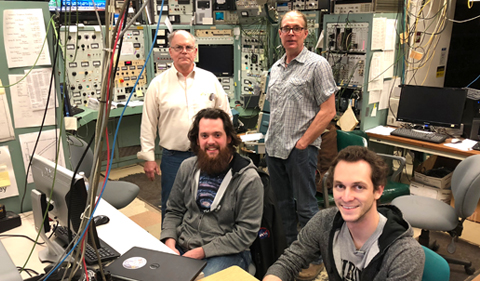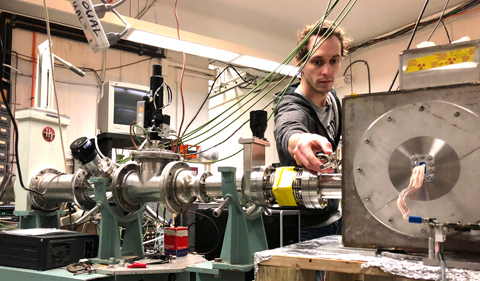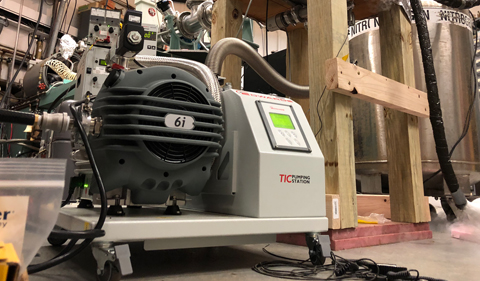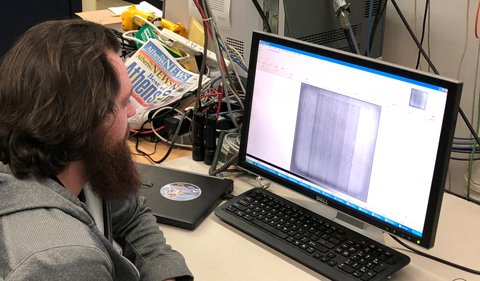
Ohio University Edwards Accelerator staff Don Carter and Devon Jacobs (background) with Penn State researchers Mitch Wages and Evan Bray in the Lab’s control room
The next generation of X-ray space telescopes requires imaging detectors that are able to withstand much more radiation than their predecessors in order to have a long operational lifetime in space.
Don Carter and Devon Jacobs, nuclear instrumentation and accelerator engineers at Ohio University’s Edwards Accelerator Lab, hosted two astrophysicists from Penn State’s Astronomy & Astrophysics Department. Research Technologist Mitch Wages and Graduate Student Researcher Evan Bray brought an X-ray Hybrid CMOS Detector that is being developed for use on the next generation of X-ray space telescopes.
The visitors began a series of tests to measure the durability of their type of X-ray detector against different amounts of radiation, thereby simulating the radiation the detectors will be subjected to on the space telescope when it is launched and orbits around the Earth.
By blasting their detector with short, powerful bursts of radiation and measuring the radiation effects on their equipment, they aim to predict how many years the detectors could exist in space before the hardware becomes distressed and ceases to function.
“The Edwards Accelerator Lab is able to accommodate our unique constraints for the experiment, which involved illuminating the detector with a defocused beam of protons at an extremely low current,” explains Bray.
“In the weeks before the experiment, Don and Devon prepared the beamline by meticulously tuning and measuring the beam strength and shape,” Wages adds.
“Originally the plan was to perform our tests after three separate irradiations, but after running into some issues with the beamline today, we’ll be completing the final two in a couple months after it undergoes some repairs.”

Bray stands next to the affectionately named ‘Cube’ vacuum chamber, which contains the Hybrid CMOS Detector and associated electronics. Positioning and aligning the Cube on the beamline proved to be a delicate process.

Using a rotatable piece that can be operated from the outside of the chamber, a radioactive Iron-55 X-ray source is moved into place in order to characterize detector properties after each dose of radiation. Properties such as energy resolution and electrical noise are measured after each test.

The detector mounted inside the vacuum chamber uses liquid nitrogen to maintain an operating temperature of 150 K (-190° F). This is necessary to perform accurate measurements of each individual X-ray photon.

In order to remove the air from the chamber and allow the transmission of protons and X-rays, specialized vacuum pumps maintain a pressure level that is ~100 million times less dense than air at sea level.

The darker rectangle in the center of the image indicates a clear distinction between the damaged and undamaged portions of the detector, which confirms that the experimental setup was properly aligned and assembled.



















Comments